Be it modern convenience or traditional artistry, Malaysian rangoli kolam makers see rising demand for artform
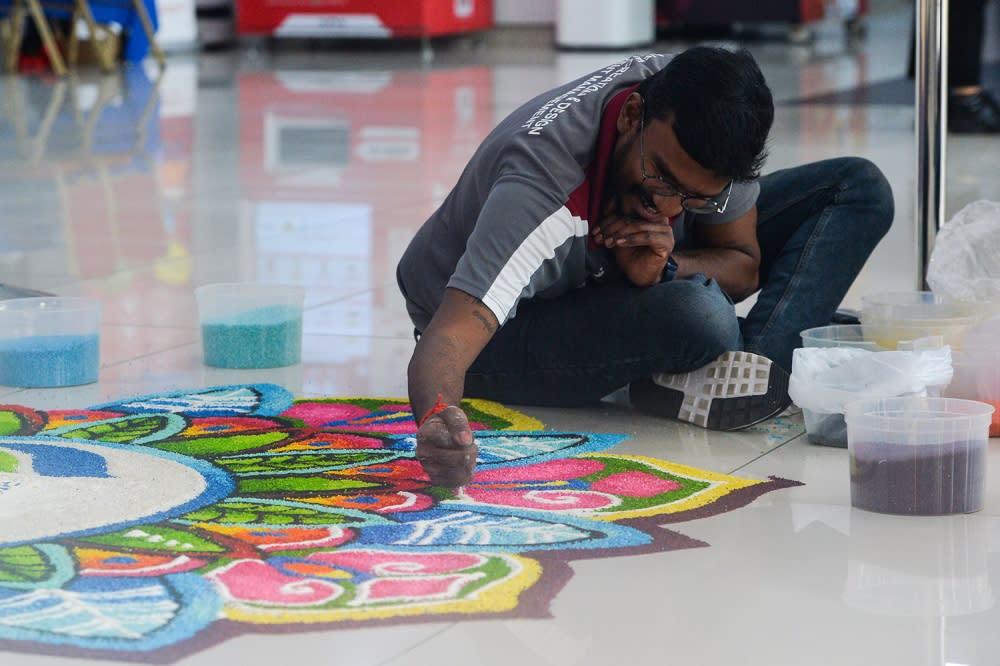
KUALA LUMPUR, Nov 10 — The intricate art of rangoli kolam takes centre stage, attracting much attention, especially leading up to the Deepavali celebrations.
The traditional floor art which uses coloured rice as one of its main ingredients welcomes guests with its vibrant layers of colours and intriguing designs.
The symbol of prosperity also represents harmonious coexistence when edible ingredients are used, feeding ants, birds and small animals.
Malay Mail takes a look at the art of making rangoli kolam in Malaysia and explores how it has become a growing full-time business.
Conveniency is key
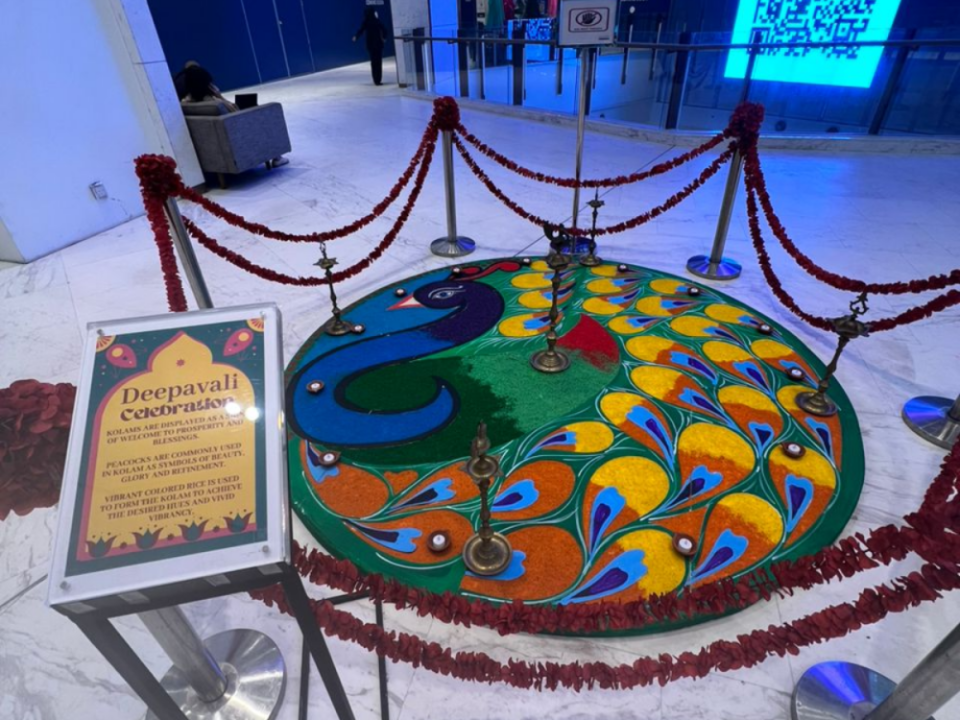
One of Saravanah polystyrene-based rangoli kolam being displayed at a local shopping mall. — Picture courtesy of HGP Saravanah Rao.
HGP Saravanah Rao is a kolam maker based in Port Dickson and has been specialising in producing his own polystyrene-based rangoli kolams since 2010.
The 39-year-old who sees convenience as key in today’s fast-paced lifestyle aims to keep the traditions of rangoli kolam alive by providing ready-made kolams which are easy to prepare and time saving.
According to Saravanah, it would take normally around one to two hours to produce a standard-sized kolam.
With a polystyrene kolam however, it only takes around 15 minutes to complete.
“We provide the coloured rice and other kolam materials.
“You just need to place the polystyrene on the floor and apply the coloured rice onto the design.
“Then you can also pick it up and place it anywhere you want. It’s easy and won’t affect the design,” he said.
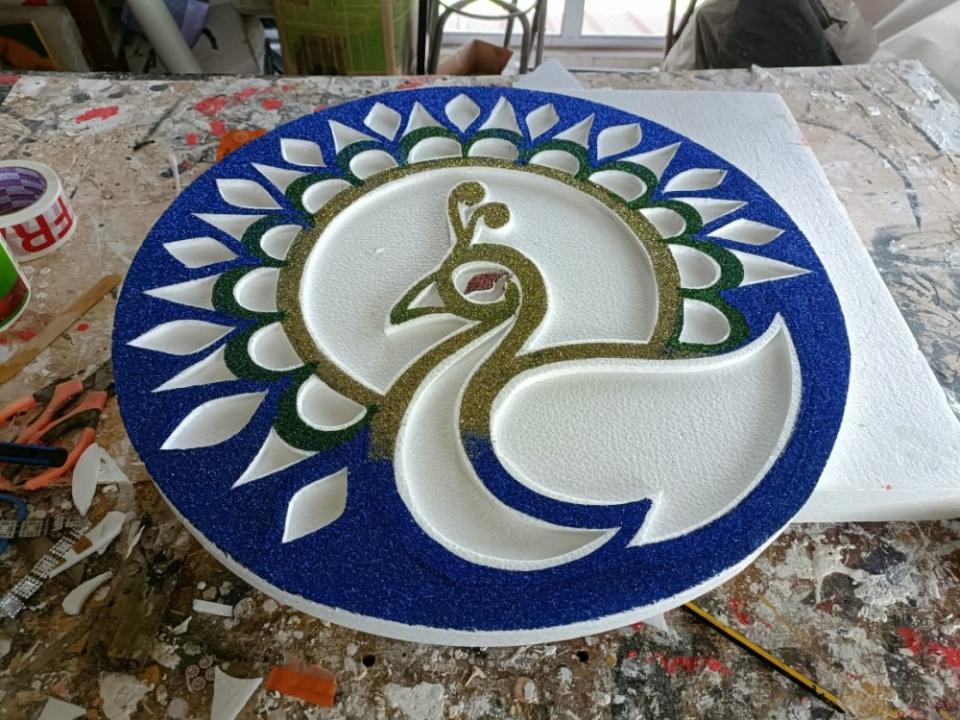
According to Saravanah, it would only take around 15-minutes to finish making a polystyrene-base rangoli kolam compared to usual ones which could take up to one hour. — Picture courtesy of HGP Saravanah Rao.
He added that with polystyrene kolam, it minimises the risk of the kolam getting spoiled by people accidentally stepping on it which often occurs.
Saravanah, who usually provides his ready-made kolams in bulk to local cash and carry shops as well as on online shopping platforms said that his business has been steadily growing over the years and experiences high demand during Deepavali.
Charging between RM40 to RM50 for a standard 20 by 20 inches kolam, the modern take of the artform comes in a variety of designs and motifs including floral and animal designs.
He first introduced his polystyrene base kolam at his sister’s birthday party back in 2010 and it garnered attention from relatives and friends who began putting in requests for it.
Despite having received negative feedback on his new form of kolam during the early days of his business, Saravanah said that the support he has received from the public has outweighed it all.
Going places with passio
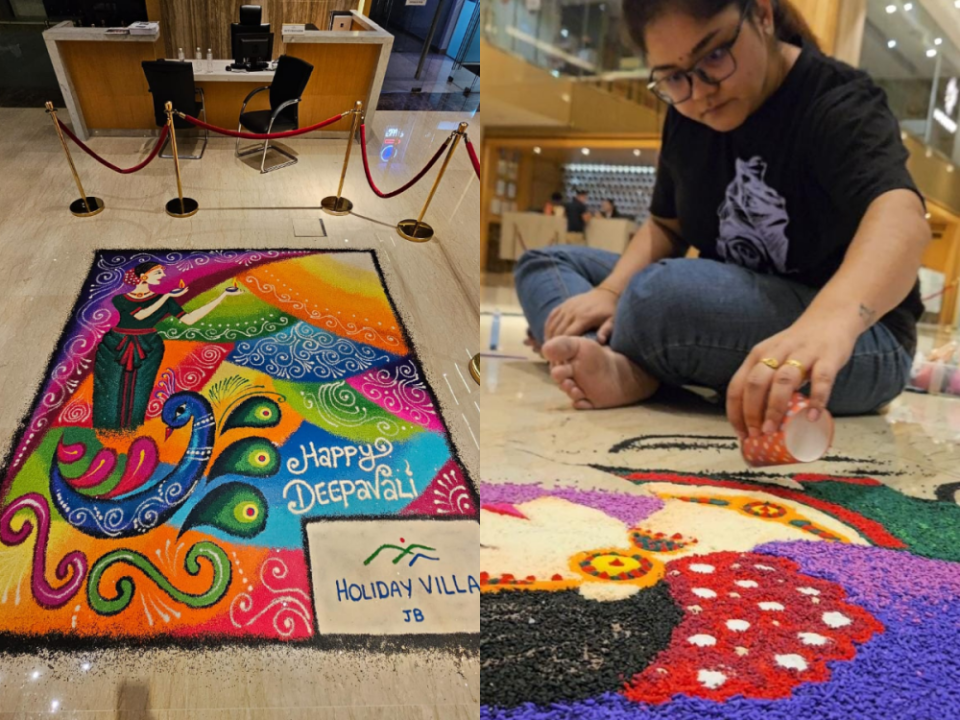
Mogenes has been making rangoli kolam professionally since she was 17-year-old. — Picture courtesy of Mogenes.
For 28-year-old Mogenes, watching her mother design rangoli kolams at home early in the morning every Deepavali since she was a child has contributed greatly to her interest in the traditional art.
Intrigued by the colourful kolams she saw, Mogenes began learning to make her own kolam by the age of 12.
After entering numerous kolam-making competitions, she turned her passion for the traditional artform into a side business at the age of just 17.
With almost 11 years of experience in making rangoli kolam professionally, the Johor Baru-based beautician is now amongst the most sought-after kolam makers around the region and has seen an increased orders of her services this year.
Over the last couple of months, Mogenes has done over 30 rangoli kolams at numerous locations around northern and southern parts of peninsular Malaysia including for hotels, corporate offices and residences.
Her clients include Holiday Villa JB, Melaka’s Konica Minolta office as well as the Southern Marina Residences and Amari Hotel in Johor Baru.
She recently returned from Singapore after being commissioned to do a kolam at one of Micron Semiconductor offices there.
The biggest rangoli kolam that she ever did was a 5.5 meter kolam at Wings by Croske Resort in Langkawi recently that took a whopping 15 hours to complete.
Mogenes added that social media such as TikTok and Instagram has played a big role in her business as most of her clients got in touch with her through the platforms after seeing videos of her rangoli kolams.
“Kolam making is an ongoing learning process for me.
“You improve with every design and you explore your creatively on the details of the designs as you go on.
“For my age, seeing girls making kolam arts are pretty rare, but I’m seeing a lot of men getting into the business,” she said.
Keeping traditional values
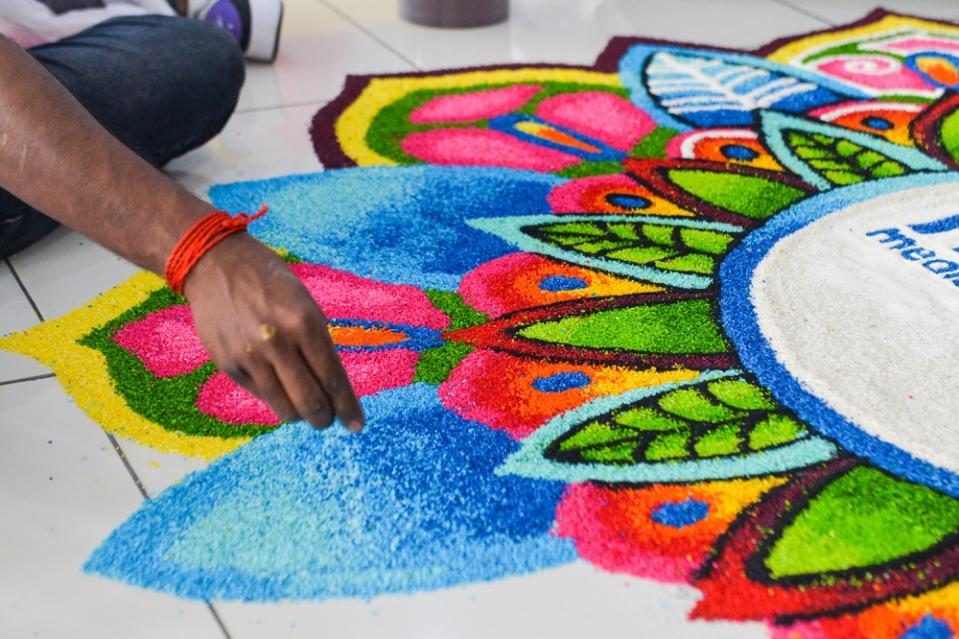
Sivabalan has made over 52 rangoli kolams these past couple of months leading to Deepavali. — Picture by Miera Zulyana.
Wedding planner and kolam maker Sivabalan Arumugam has had his hands full in the months building up to Deepavali this year with many corporate companies especially from the automotive industry acquiring his kolam-making skills for their showrooms.
Sivabalan, via his company Life Creation and Design, has made over 52 rangoli kolams these past couple of months for big name clients such as Volvo, Proton and Honda, making this year their most lucrative year yet.
Their rangoli kolam prices range from RM450 and go up to over RM30,000 depending on the kolam sizes and designs which includes Deepavali elements such as lotus, lamps and peacock.
One of their most expensive jobs was for the Pavillion shopping complex in Johor Baru last year where they charged RM38,000 for a 9.75 meter rangoli kolam with a peacock design.
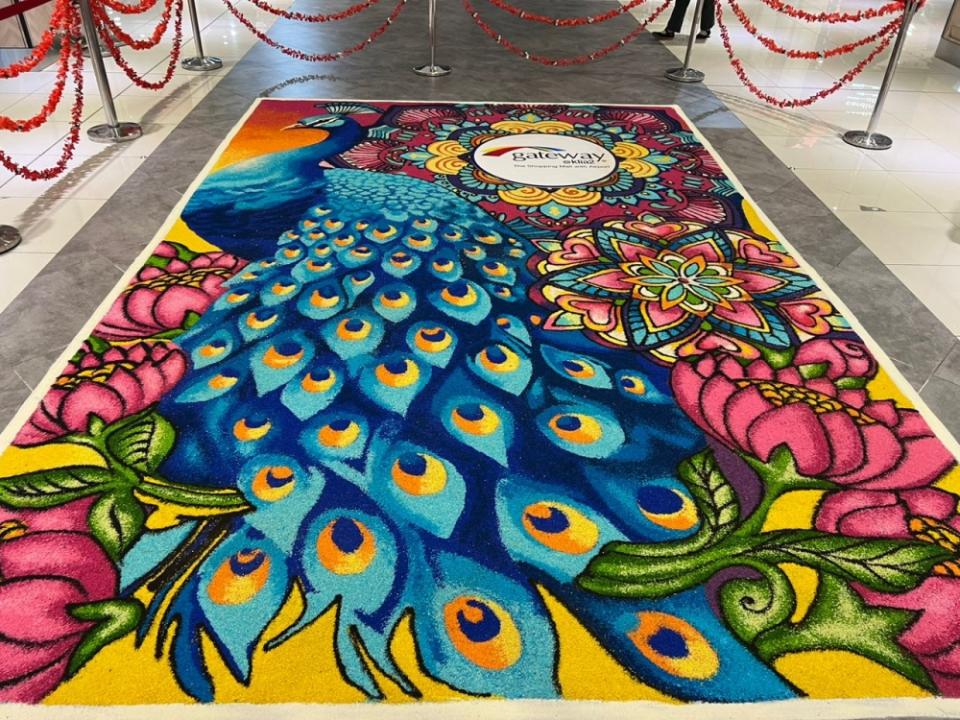
One of the rangoli kolam made by Sivabalan being displayed at KLIA2.— Picture courtesy of Sivabalan Arumugam.
Keeping up with the tradition of kolam being a feeding ground for smaller animals, the 35-year-old always uses food colouring on the rice and suji flour for his kolam ingredients and returns to it after a few weeks or months of the kolam being displayed.
He gives the recollected rice and flour to farmers and breeders for feeding livestock.
Sivabalan repeats this process for most kolams he makes.
He said that every kolam maker has their own identity in their designs and he avoids copying designs of others out of courtesy and respect for fellow kolam makers.
“I’ve been doing kolam for almost 20 years now and I’ve always had a deep interest in art and design.
“Sometimes I am able to recognise the work of other kolam artists by looking at their designs.
“Most of them have their own signature look,” he said.
In an effort to nurture interest especially for younger generations in the art of kolam, Sivabalan will also organise kolam-making workshops and he has previously worked with local schools as well as Sunway Putra Mall.
He is also planning to organise another workshop in the near future on how to mix colours and create kolam designs.



